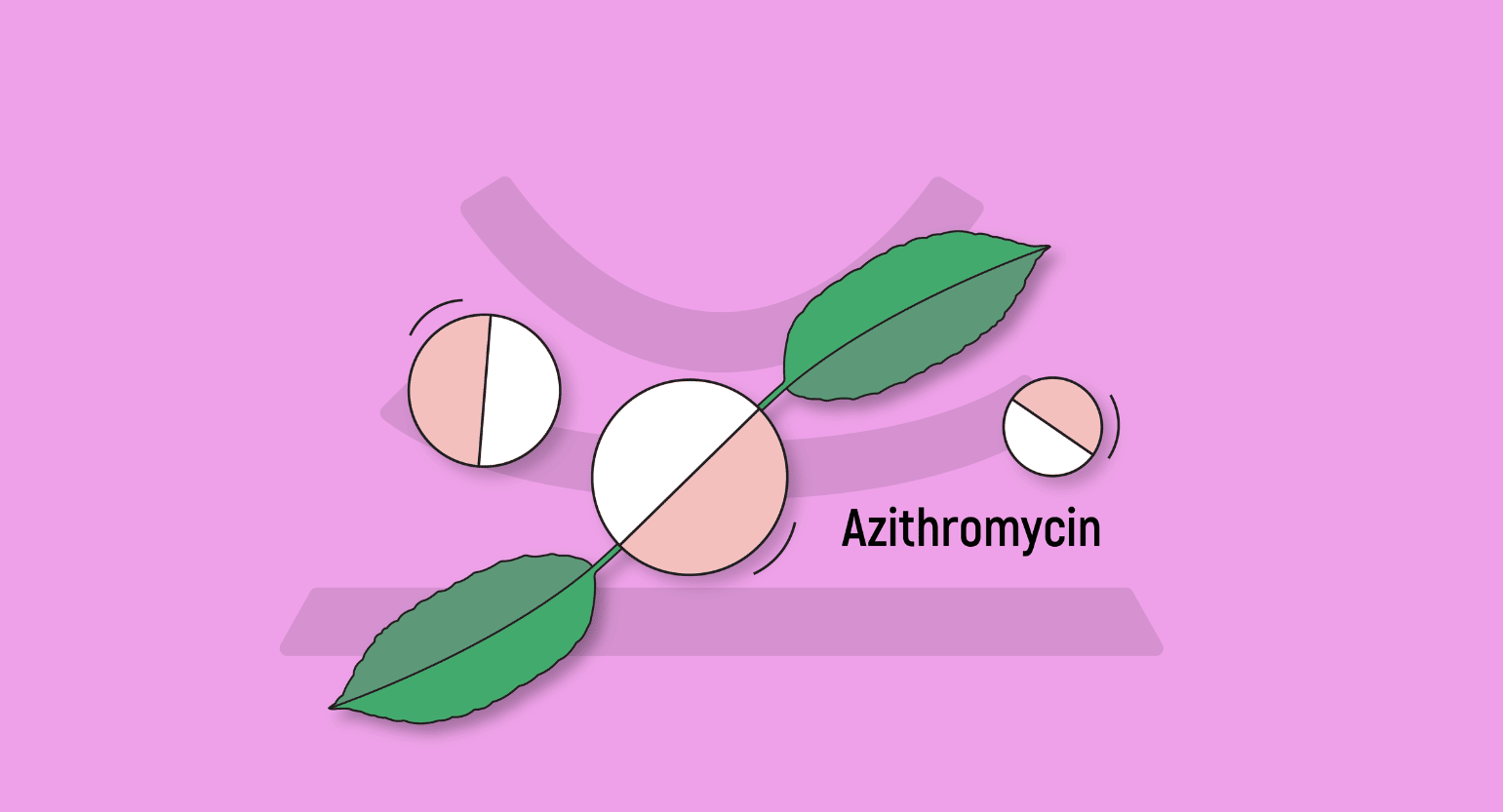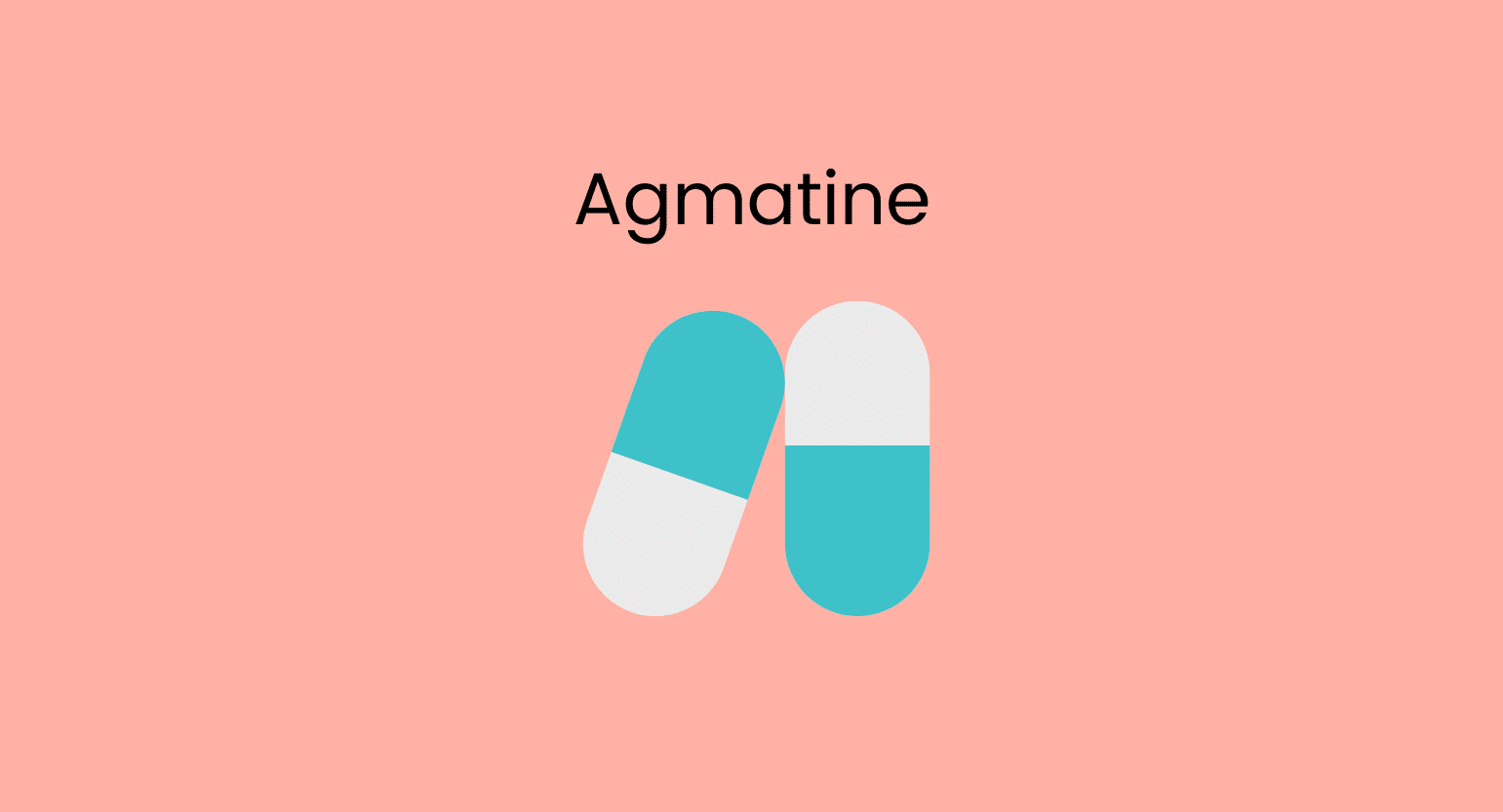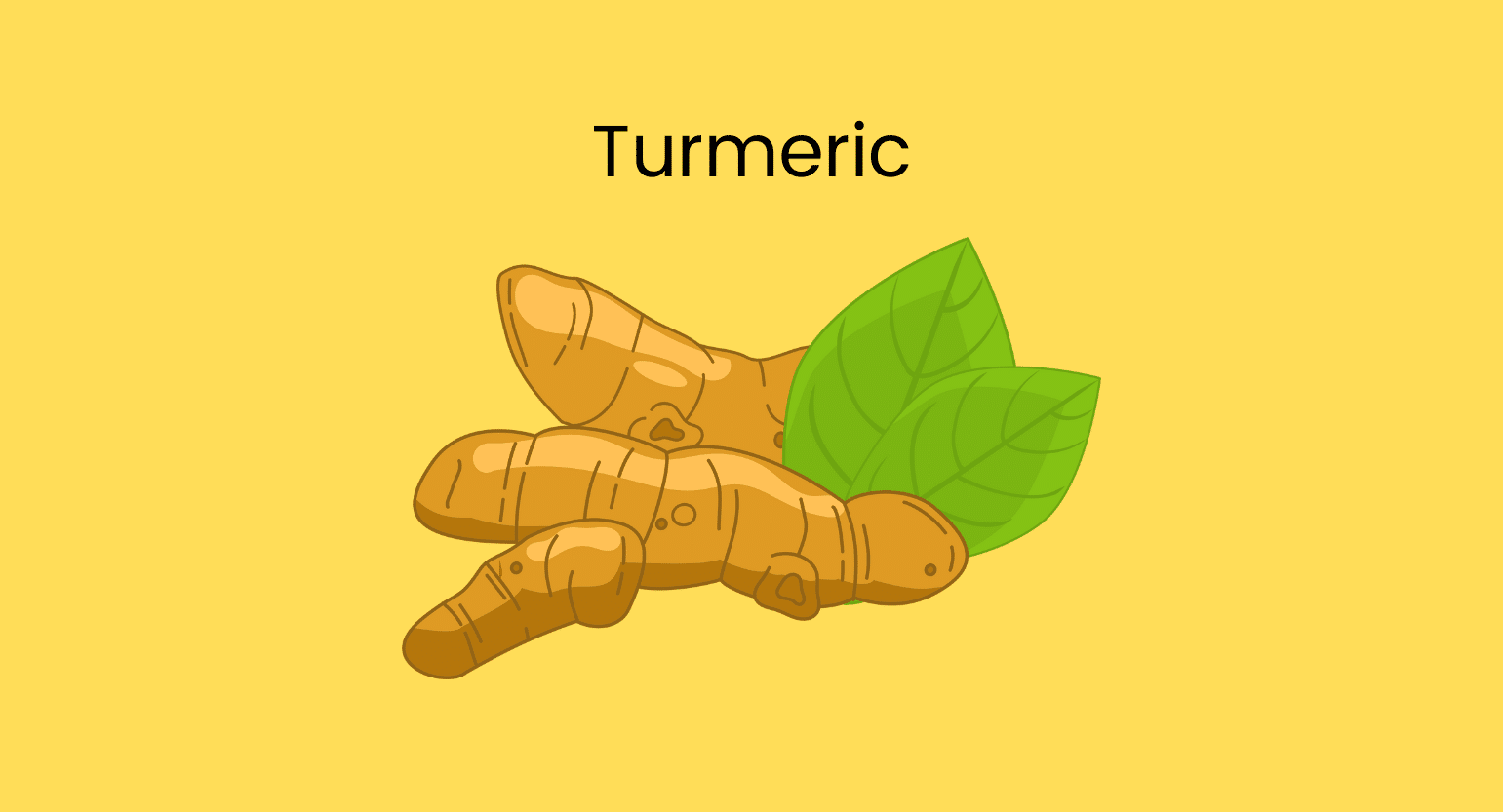Does Kratom Interact With Amoxicillin?
The chances of interaction between these drugs are low but not nonexistent.
Kratom and amoxicillin have totally different mechanisms of action. Kratom works on opioid, dopamine, serotonin, and norepinephrine receptors to exert its effects [1]. Amoxicillin prevents the formation of the cell wall of bacteria [2].
The metabolism pathways of kratom and amoxicillin show significant differences. Kratom is mainly metabolized by liver CYP enzymes CYP3A4, CYP3A5, and CYP2D6 [3]. Amoxicillin is poorly metabolized in the liver, and about 50-85% of the drug is excreted unchanged in urine [4,5].
Thus, these two drugs do not interact directly, but many other factors could cause problems in practice.
For example, both drugs are rapidly absorbed from the gastrointestinal tract [6,7]. If they are used simultaneously, they will compete for the surface of absorption and stay in the gastric fluid for a longer-than-normal period.
The acidity of the gastric fluid potentiates the solubility of kratom. Still, if kratom stays in the same gastric environment for an increased period, it loses its properties as it is acid-labile [8]. But, amoxicillin is an acid-stable drug [9]. The chances of lower bioavailability of kratom are high if co-administered with another acid-stable, rapidly absorbable drug like amoxicillin.
Therefore, both kratom and amoxicillin could be less effective if taken together. The easiest way to reduce this effect is to space the dosing of each substance apart by at least 2 hours.

Kratom & Antibiotics: Drug Interactions
Amoxicillin belongs to the penicillin group of antibiotics. Other antibiotics that may interact with kratom include:
- Benzylpenicillin
- Penicillin
- Pivampicillin
- Pivmecillinam
Is It Safe To Take Kratom With Amoxicillin?
You might not experience any problems when taking kratom with amoxicillin, but it’s wise to avoid this combination. No good studies have been conducted to examine this combination, and there’s a possibility the combination could negate the beneficial effects of both substances.
If the effects of amoxicillin are blocked or reduced, it may become ineffective at treating the infection, leading to serious consequences.
With that said, kratom and amoxicillin have entirely different mechanisms of action. Their metabolism pathways are also very different, so no direct interactions are expected.
As always, it’s best to consult your physician before taking amoxicillin and kratom.
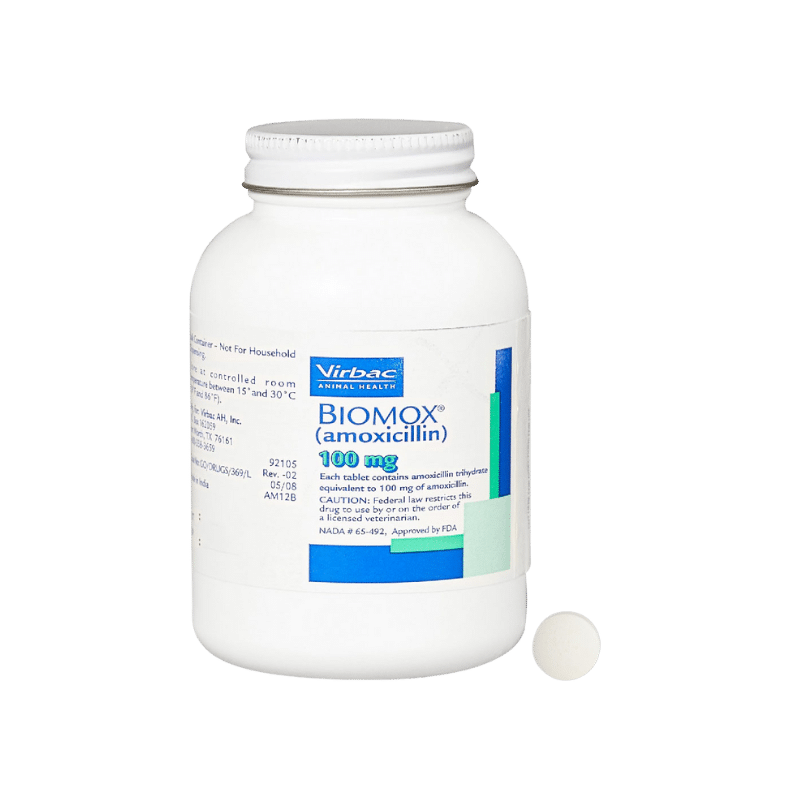
What Is Amoxicillin?
Amoxicillin is an aminopenicillin prepared by adding an extra amino group to penicillin. The drug was developed to combat penicillin-resistant bacteria [10]. It is a semi-synthetic derivative of penicillin and has structural similarities, but it has better oral absorption [11].
This antibiotic acts on susceptible bacteria by inhibiting cell wall mucopeptide biosynthesis and causing an impairment in bacteria multiplication. Amoxicillin achieves this by inhibiting the transpeptidase enzyme, which is crucial for the final step of bacterial cell wall synthesis, i.e., cross-linking of peptidoglycan.
It is used for the treatment of various bacterial infections. It is effective against mainly gram-positive bacteria like Streptococcus spp. [12], Listeria monocytogenes [13], and Enterococcus spp. [14]. It also covers some gram-negative bacteria, e.g., Escherichia coli, Salmonella spp., Clostridium spp., Shigella spp., etc.
Unfortunately, most gram-negative bacteria have developed various resistance mechanisms against amoxicillin [15].
Some of the most common brand names of amoxicillin are Amoxil, Moxatag, and Trimox.
Amoxicillin Specs:
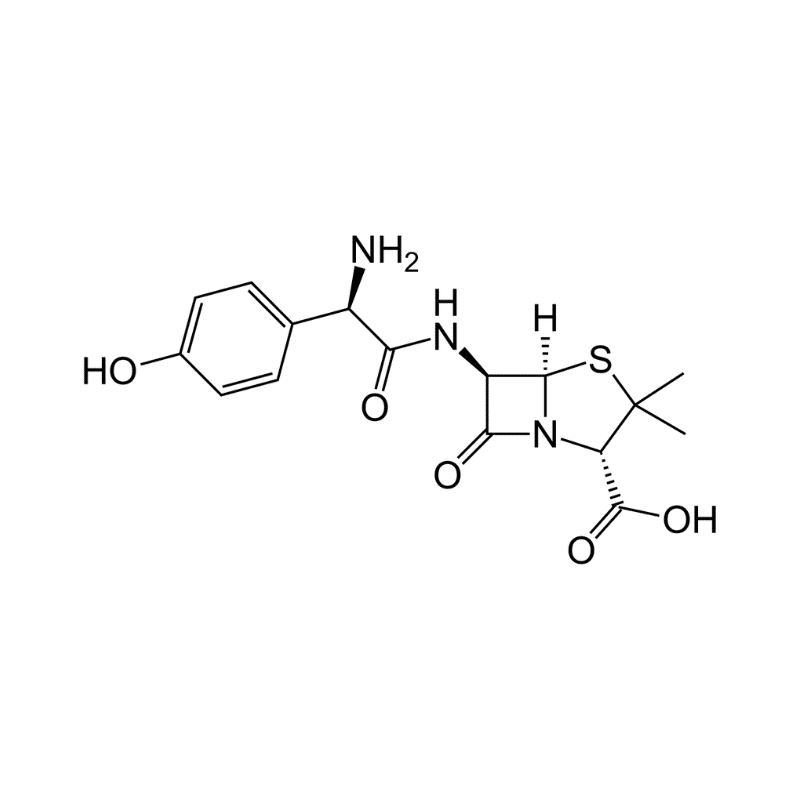
| Drug Name | Amoxicillin |
| Trade Name | Amoxil, Moxatag, Trimox |
| Classification | Aminopenicillin |
| CYP Metabolism | NA |
| Interaction With Kratom | Indirect |
| Risk Of Interaction | Mild |
What Is Amoxicillin Used For?
Amoxicillin is an antibiotic with a long list of approved uses; here are some of the most common:
Actinomycosis
This antibiotic is effective for the treatment of mild infection or cutaneous infection [16] and as step-down therapy following parenteral treatment of severe systemic actinomycosis, a chronic bacterial infection that commonly affects the face and neck.
Anthrax
Amoxicillin is used for mild forms of anthrax [17] and can be used for inhalational post-exposure prophylaxis. It is also helpful for anthrax involving skin but not other organ systems. Public health officials should be consulted for event-specific recommendations.
Bronchiectasis
Bronchiectasis is a chronic lung condition in which irreversible dilation of airways occurs. Amoxicillin compounded with clavulanic acid can help mild exacerbations of bronchiectasis, especially in children [18].

Chlamydia trachomatis
Erythromycin is the preferred agent for the treatment of Chlamydia in pregnant individuals. However, there have been compliance problems due to its gastrointestinal side effects. On the other hand, amoxicillin is considered one of the safest antibiotics during pregnancy (category B) and shows fewer gastrointestinal reactions relative to erythromycin.
Because of these reasons, amoxicillin may be used as an alternative to treat Chlamydia infections during pregnancy [19].
Endocarditis
Endocarditis is inflammation of the innermost layer of the heart. Amoxicillin is used as prophylaxis before any dental or invasive respiratory tract procedures in high-risk individuals, i.e., patients with cardiac conditions who may develop severe endocarditis [20].

Helicobacter Pylori
Helicobacter pylori (AKA H. pylori) is a bacteria that can cause peptic ulcers in the stomach. Amoxicillin is a significant component of the treatment regimen for eradicating H. pylori [21].
Lyme Disease
Lyme disease is caused by Borrelia burgdorferi. Amoxicillin is commonly used to manage the mild form of the disease [22]. It is used to treat Lyme disease rash, a.k.a. Erythema migrans. It may also help the joint infection without neurologic manifestations and the mild heart conditions in Lymes disease.
Otitis Media
Otitis media refers to the middle ear infection caused by Streptococcus pneumoniae and other pathogens. Amoxicillin is very effective against Streptococcus and commonly prescribed as treatment for acute otitis media in children and adults alike [23].
Pneumonia
Amoxicillin is an empirical therapy for uncomplicated pneumonia [24]. It may be an oral step-down therapy following treatment with intravenous drugs.

Bacterial Rhinosinusitis
Rhinosinusitis is an infection of the mucosa of the nose and sinuses. Amoxicillin is effective in the treatment of acute bacterial rhinosinusitis [25].
Skin & Soft Tissue Infection
Amoxicillin can treat superficial skin infections due to Streptococcus spp., e.g., erysipelas [26].
Streptococcal pharyngitis
In most cases, pharyngitis has a viral etiology. Thus, antibiotics are not warranted. However, when caused by a bacteria, amoxicillin is the drug of choice for pharyngitis [27].
Urinary Tract Infections (UTI)
Amoxicillin may be used in pregnant females who develop symptomatic UTIs [28]. It is one of the safest antibiotics for pregnant individuals due to the least teratogenicity. In non-pregnant females and males, it is not used as the first-line drug.

What Is The Dose Of Amoxicillin?
The appropriate dose of amoxicillin varies from 500-1000 mg, 2 to 3 times a day [29] — or as prescribed by your doctor. It is common to found this drug compounded with clavulanic acid; this is because clavulanic acid can stop bacteria from destroying amoxicillin and increase its effectiveness.
What Are The Side Effects Of Amoxicillin?
Lethal side effects are rare following average doses of this drug. The adverse effects following the administration of amoxicillin are as follows:
Antibiotic-Associated Diarrhea
Gastrointestinal effects range from antibiotic-associated diarrhea to nausea and vomiting. As the antibiotic disrupts indigenous gut symbiotic bacteria, the invasion of the gut by virulent bacteria becomes easy. The mean time for the onset of antibiotic-associated diarrhea is 3 to 18 days [30].
Hypersensitivity Reactions
Hypersensitivity (allergic) reactions range from skin rash to rare cases of anaphylaxis. Anaphylaxis is the most severe form of allergic reaction. The mechanism of these adverse reactions is not dose-related but immunologic. Allergic reactions can occur within minutes to hours. Anaphylaxis may become fatal if proper treatment is not started immediately [31].
Other Side Effects
Other reactions are less common and mild than the aforementioned adverse effects [21]. These include:
- Agitation
- Confusion
- Dizziness
- Headache
- Hepatitis
- Oral or genital candidiasis
- Vulvovaginal Infection

What Is Kratom?
Kratom (Mitragyna speciosa) is a tree from Southeast Asia that has been used as traditional herbal medicine in Vietnam, Thailand, Indonesia, among other countries.
The leaves of this tree are swallowed in powdered form or in tea. It’s used for various health applications, including chronic pain and opioid withdrawal [32].
The active ingredients of kratom are mitragynine and 7-hydroxymitragynine — but there are more than a dozen other active alkaloids in the plant.
Mitragynine and 7-hydroxymitragynine act as partial agonists at μ-opioid receptors and interact with various other neuroreceptors like dopamine, norepinephrine, and serotonin [33].
If a drug acts on a receptor and produces a partial effect, it is known as a partial agonist at the receptor.
What Is Kratom Used For?
Kratom has been used in Southeast Asia to relieve fatigue, elevate mood, and alleviate sleep disorders. In the Western world, it’s used as an alternative to coffee for energy and prescription opioids for managing chronic pain [34].
Related: Top Traditional Uses of Kratom & The Science That Backs it Up.
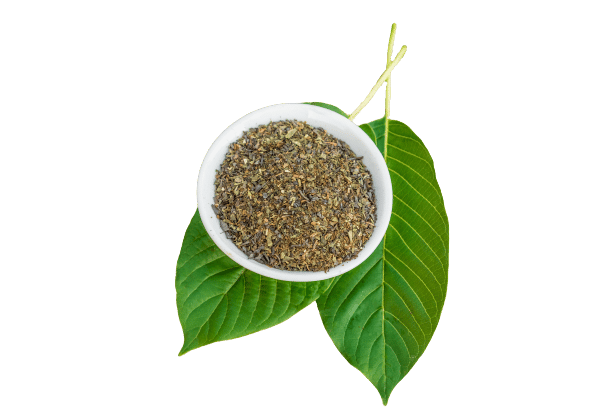
What Are The Side Effects Of Kratom?
When taken within the dosage guidelines, experiencing the side effects of kratom is rare. However, adverse reactions may occur when taken in large quantities and without tolerance breaks [35]. The most common side effect of taking too much kratom is nausea.
Side effects of kratom may include:
Also see: How Much Kratom Is Too Much?
What Are The Different Types Of Kratom?
Kratom comes in many different forms (called strains). Each kratom strain is different, but we can break them down into four main types:
- Green Vein Kratom — the most balanced and well-rounded kratom strain.
- Red Vein Kratom — calming, euphoric, and analgesic strains of kratom.
- White Vein Kratom — stimulating and energizing kratom strains.
- Yellow Vein Kratom — a fermented blend of red and white kratom. Effects can vary widely.

Key Takeaways: Mixing Kratom & Amoxicillin
Kratom and amoxicillin may interact indirectly with each other. Amoxicillin reduces the bioavailability of kratom by interfering with absorption (and vice versa). Thus, the antibiotic’s effects may be hindered if both drugs are taken together.
If you must take both these drugs together, it is essential to take kratom at least 2 hours after taking amoxicillin, as the half-life of amoxicillin is approximately 1 hour [36].
Nevertheless, it is best to consult your primary care physician before combining these two drugs.
- Hartley, C., 2nd, Bulloch, M., & Penzak, S. R. (2022). Clinical Pharmacology of the Dietary Supplement Kratom (Mitragyna speciosa). Journal of Clinical Pharmacology, 62(5), 577–593.
- Weber, D. J., Tolkoff-Rubin, N. E., & Rubin, R. H. (1984). Amoxicillin and potassium clavulanate: an antibiotic combination. Mechanism of action, pharmacokinetics, antimicrobial spectrum, clinical efficacy, and adverse effects. Pharmacotherapy, 4(3), 122–136.
- Kamble, S. H., Sharma, A., King, T. I., León, F., McCurdy, C. R., & Avery, B. A. (2019). Metabolite profiling and identification of enzymes responsible for the metabolism of mitragynine, the major alkaloid of Mitragyna speciosa (kratom). Xenobiotica, 49(11), 1279-1288.
- Veeraraghavan, B., Bakthavatchalam, Y. D., & Sahni, R. D. (2021). Orally administered amoxicillin/clavulanate: current role in outpatient therapy. Infectious Diseases and Therapy, 10(1), 15-25.
- Bodey, G. P., & Nance, J. (1972). Amoxicillin: in vitro and pharmacological studies. Antimicrobial agents and chemotherapy, 1(4), 358-362.
- Ya, K., Tangamornsuksan, W., Scholfield, C. N., Methaneethorn, J., & Lohitnavy, M. (2019). Pharmacokinetics of mitragynine, a major analgesic alkaloid in kratom (Mitragyna speciosa): A systematic review. Asian journal of psychiatry, 43, 73-82.
- Zarowny, D., Ogilvie, R., Tamblyn, D., Macleod, C., & Ruedy, J. (1974). Pharmacokinetics of amoxicillin. Clinical Pharmacology & Therapeutics, 16(6), 1045-1051.
- Ramanathan, S., Parthasarathy, S., Murugaiyah, V., Magosso, E., Tan, S. C., & Mansor, S. M. (2015). Understanding the physicochemical properties of mitragynine, a principal alkaloid of Mitragyna speciosa, for preclinical evaluation. Molecules, 20(3), 4915-4927.
- Jerzsele, Á., & Nagy, G. (2009). The stability of amoxicillin trihydrate and potassium clavulanate combination in aqueous solutions. Acta Veterinaria Hungarica, 57(4), 485-493.
- Akhavan, B. J., Khanna, N. R., & Vijhani, P. (2021). Amoxicillin. In StatPearls [Internet]. StatPearls Publishing.
- Gordon, R. C., Regamey, C., & Kirby, W. M. (1972). Comparative clinical pharmacology of amoxicillin and ampicillin administered orally. Antimicrobial agents and chemotherapy, 1(6), 504-507.
- Breese, B. B., Disney, F. A., Talpey, W. B., & Green, J. L. (1974). Treatment of streptococcal pharyngitis with amoxicillin. Journal of Infectious Diseases, 129(Supplement_2), S178-S180.
- Farazuddin, M., Chauhan, A., Khan, R. M., & Owais, M. (2011). Amoxicillin-bearing microparticles: potential in the treatment of Listeria monocytogenes infection in Swiss albino mice. Bioscience Reports, 31(4), 265-272.
- Mainardi, J. L., Gutmann, L., Acar, J. F., & Goldstein, F. W. (1995). Synergistic effect of amoxicillin and cefotaxime against Enterococcus faecalis. Antimicrobial agents and chemotherapy, 39(9), 1984-1987.
- Stapleton, P., Wu, P. J., King, A., Shannon, K., French, G., & Phillips, I. (1995). Incidence and mechanisms of resistance to the combination of amoxicillin and clavulanic acid in Escherichia coli. Antimicrobial Agents and Chemotherapy, 39(11), 2478-2483.
- Bonifaz, A., Tirado-Sánchez, A., Calderón, L., Montes de Oca, G., Torres-Camacho, P., & Ponce, R. M. (2017). Treatment of cutaneous actinomycosis with amoxicillin/clavulanic acid. Journal of Dermatological Treatment, 28(1), 59-64.
- Doganay, M., Metan, G., & Alp, E. (2010). A review of cutaneous anthrax and its outcome. Journal of infection and public health, 3(3), 98-105.
- Goyal, V., Grimwood, K., Ware, R. S., Byrnes, C. A., Morris, P. S., Masters, I. B., … & Chang, A. B. (2019). Efficacy of oral amoxicillin–clavulanate or azithromycin for non-severe respiratory exacerbations in children with bronchiectasis (BEST-1): a multicentre, three-arm, double-blind, randomised placebo-controlled trial. The Lancet Respiratory Medicine, 7(9), 791-801.
- Crombleholme, W. R., Schachter, J., Grossman, M. O. S. E. S., Landers, D. V., & Sweet, R. L. (1990). Amoxicillin therapy for Chlamydia trachomatis in pregnancy. Obstetrics and Gynecology, 75(5), 752-756.
- Dajani, A. S., Bawdon, R. E., & Berry, M. C. (1994). Oral amoxicillin as prophylaxis for endocarditis: what is the optimal dose?. Clinical infectious diseases, 18(2), 157-160.
- Fuccio, L., Minardi, M. E., Zagari, R. M., Grilli, D., Magrini, N., & Bazzoli, F. (2007). Meta-analysis: duration of first-line proton-pump inhibitor–based triple therapy for Helicobacter pylori eradication. Annals of internal medicine, 147(8), 553-562.
- Massarotti, E. M., Luger, S. W., Rahn, D. W., Messner, R. P., Wong, J. B., Johnson, R. C., & Steere, A. C. (1992). Treatment of early Lyme disease. The American journal of medicine, 92(4), 396-403.
- Le Saux, N., Gaboury, I., Baird, M., Klassen, T. P., MacCormick, J., Blanchard, C., … & Moher, D. (2005). A randomized, double-blind, placebo-controlled noninferiority trial of amoxicillin for clinically diagnosed acute otitis media in children 6 months to 5 years of age. Cmaj, 172(3), 335-341.
- Hagberg, L., Torres, A., Van Rensburg, D., Leroy, B., Rangaraju, M., & Ruuth, E. (2002). Efficacy and tolerability of once-daily telithromycin compared with high-dose amoxicillin for treatment of community-acquired pneumonia. Infection, 30(6), 378-386.
- Scheid, D. C., & Hamm, R. M. (2004). Acute bacterial rhinosinusitis in adults: part II. Treatment. American family physician, 70(9), 1697-1704.
- Bonnetblanc, J. M., & Bédane, C. (2003). Erysipelas. American journal of clinical dermatology, 4(3), 157-163.
- Clegg, H. W., Ryan, A. G., Dallas, S. D., Kaplan, E. L., Johnson, D. R., Norton, H. J., … & Giftos, P. M. (2006). Treatment of streptococcal pharyngitis with once-daily compared with twice-daily amoxicillin: a noninferiority trial. The Pediatric infectious disease journal, 25(9), 761-767.
- Vercaigne, L. M., & Zhanel, G. G. (1994). Recommended treatment for urinary tract infection in pregnancy. Annals of Pharmacotherapy, 28(2), 248-251.
- Calver, A. D., Walsh, N. S., Quinn, P. F., Baran, C., Lonergan, V., Singh, K. P., … & Lower Respiratory Tract Infection Collaborative Study Group. (1997). Dosing of amoxicillin/clavulanate given every 12 hours is as effective as dosing every 8 hours to treat lower respiratory tract infection. Clinical infectious diseases, 24(4), 570-574.
- Högenauer, C., Hammer, H. F., Krejs, G. J., & Reisinger, C. (1998). Mechanisms and management of antibiotic-associated diarrhea. Clinical infectious diseases, 27(4), 702-710.
- Agúndez, J. A., Mayorga, C., & García-Martin, E. (2015). Drug metabolism and hypersensitivity reactions to drugs. Current Opinion in Allergy and Clinical Immunology, 15(4), 277-284.
- Casinos, E., Martinotti, G., Simonato, P., Singh, D., Demetrovics, Z., Roman-Urrestarazu, A., … & Corazza, O. (2015). Following “the Roots” of Kratom (Mitragyna speciosa): the evolution of an enhancer from traditional use to increase work and productivity in Southeast Asia to a recreational psychoactive drug in western countries. BioMed research international, 2015.
- Obeng, S., Wilkerson, J. L., León, F., Reeves, M. E., Restrepo, L. F., Gamez-Jimenez, L. R., … & Hiranita, T. (2021). Pharmacological comparison of mitragynine and 7-hydroxymitragynine: in vitro affinity and efficacy for μ-opioid receptor and opioid-like behavioral effects in rats. Journal of Pharmacology and Experimental Therapeutics, 376(3), 410-427.
- Singh, D., Narayanan, S., & Vicknasingam, B. (2016). Traditional and non-traditional uses of Mitragynine (Kratom): A literature survey. Brain Research Bulletin, 126, 41-46.
- White, C. M. (2019). Pharmacologic and clinical assessment of kratom: An update. American Journal of Health-System Pharmacy, 76(23), 1915-1925.
- Gordon, R. C., Regamey, C., & Kirby, W. M. (1972). Comparative clinical pharmacology of amoxicillin and ampicillin administered orally. Antimicrobial agents and chemotherapy, 1(6), 504-507.



